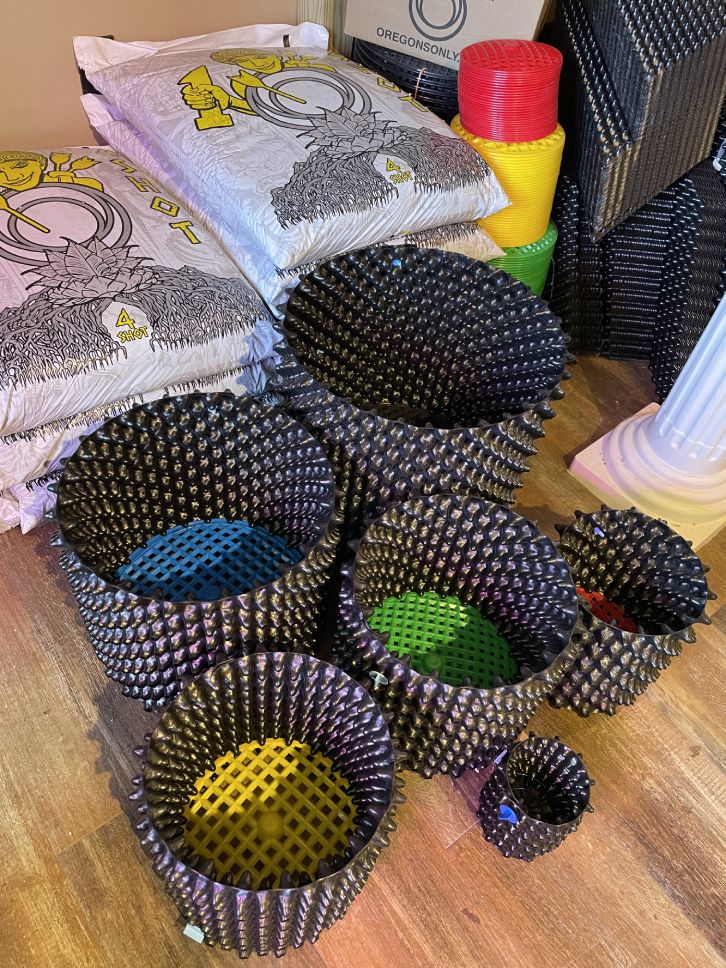Transform Your Yard with The Indoor Earthworm's Planting Technique
Wiki Article
Unlocking the Potential of Hydroponics: Comprehending Its Uses and Various Kinds
Hydroponics, a method of cultivating plants without dirt, has actually amassed enhancing attention for its prospective to transform farming and cultivation techniques. As we navigate through the complex landscape of hydroponic systems and methods, it ends up being obvious that each method holds distinct advantages and constraints.Benefits of Hydroponic Equipments

One more advantage of hydroponic systems is the ability to expand plants in a smaller sized space. Hydroponic systems decrease the threat of soil-borne conditions and parasites, as there is no soil to harbor these hazards.
Common Makes Use Of in Agriculture

Provided the effective water preservation and space-saving benefits of hydroponic systems, it appears that these cutting-edge farming approaches have actually discovered common uses in different markets of agriculture. In traditional agriculture, soil-based farming can be labor-intensive and land-consuming. Hydroponics provides a remedy by allowing crops to be expanded without soil, lowering water use by approximately 90% compared to traditional farming methods. This makes hydroponics particularly appropriate for areas facing water scarcity or minimal arable land. In addition, the controlled setting of hydroponic systems makes it possible for year-round cultivation, supplying a regular supply of fresh produce no matter exterior weather.
Hydroponics is frequently utilized for expanding a selection of crops, consisting of leafed greens, tomatoes, cucumbers, natural herbs, peppers, and strawberries. In addition, hydroponic systems are utilized in research study and instructional settings to study plant nutrition, development, and farming methods.
Exploring Different Hydroponic Methods
What are the numerous innovative strategies utilized in hydroponics to improve plant farming performance and generate? Hydroponic systems supply a variety of methods that satisfy various plant types and growing objectives. One popular method is the Deep Water Culture (DWC) system, where plant origins are immersed in a nutrient remedy, giving ample oxygen and nutrients. An additional commonly utilized technique is the Nutrient Movie Technique (NFT), which includes a superficial stream of nutrient solution moving over the plant roots, advertising water and nutrient uptake. In addition, the Ups and downs system, also called the Flooding and Drain system, periodically floodings the plant roots with nutrient option, enabling oxygenation throughout draining pipes periods. Aeroponics is an additional sophisticated strategy that entails misting plant origins with a nutrient remedy, optimizing oxygen absorption and nutrient uptake. Each of these strategies showcases the versatility and efficiency of hydroponic systems in enhancing click to read more plant growth and yield.Contrasting Various Hydroponic Systems
Checking out the efficiency and yield improvement techniques in hydroponics leads us to contrast numerous hydroponic systems available for crop cultivation. Each hydroponic system has its my company distinct attributes, benefits, and restrictions, making it crucial for cultivators to pick one of the most suitable system based on their certain needs and restraints.One of the most usual hydroponic systems is the nutrient movie strategy (NFT), where a thin film of nutrient solution constantly moves over the plant origins. In comparison, the deep water culture (DWC) system submerges plant origins straight right into the nutrient option, providing enough oxygen and nutrients.
One more preferred hydroponic system is the ebb and circulation (or flood and drain) system, which occasionally floodings the plant origins with nutrient service before draining it. By recognizing the distinctions between these hydroponic systems, farmers can make informed choices to optimize plant return and quality.
Technologies in Hydroponic Innovation
With improvements in hydroponic technology, the agricultural industry is seeing a change towards much more lasting and efficient growing approaches. Technologies in hydroponic innovation are reinventing the way plants are expanded by making best use of returns, preserving resources, and minimizing environmental impact. One key innovation is the advancement of clever hydroponic systems that make use of sensors and automation to keep track of and change ecological conditions such as pH degrees, nutrient focus, and light direct exposure in real-time. These systems allow precise control over growing problems, bring about optimum plant growth and greater crop returns.An additional notable innovation is the assimilation of vertical farming strategies with hydroponic systems, enabling the cultivation of plants in stacked layers. This upright approach takes full advantage of space usage, making it suitable for urban environments where land availability is restricted - The Indoor Earthworm. Additionally, the usage of sophisticated LED illumination systems customized to particular plant demands has improved power effectiveness and improved growth prices in hydroponic setups
Innovations like these are driving the development of hydroponics, making it a sustainable and extremely attractive alternative for contemporary farming.
Verdict
Finally, hydroponics uses countless advantages in farming and has various methods and systems that can be made use of to maximize its capacity. Technologies in hydroponic technology continue to boost performance and sustainability in food manufacturing. By comprehending the usages and various kinds of hydroponic systems, growers and farmers can open the complete dig this possibility of this innovative method of expanding plants without soil.Additionally, hydroponic systems allow for better control over nutrient levels, pH equilibrium, and ecological conditions, leading to healthier plants and greater yields.

Report this wiki page